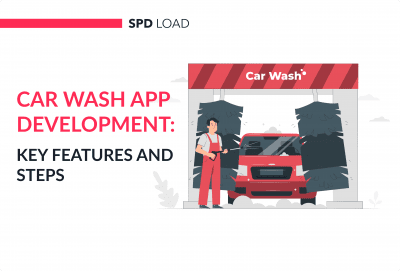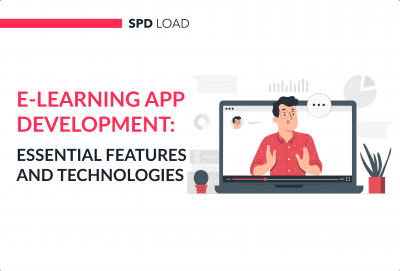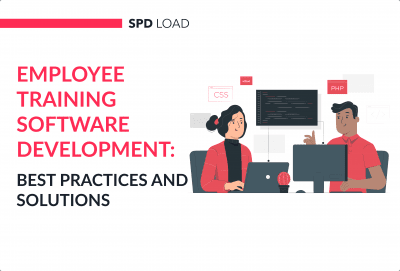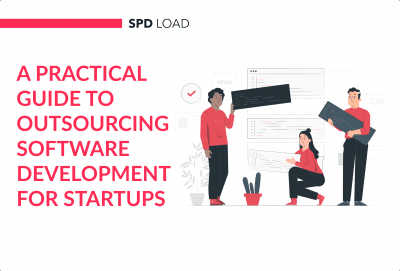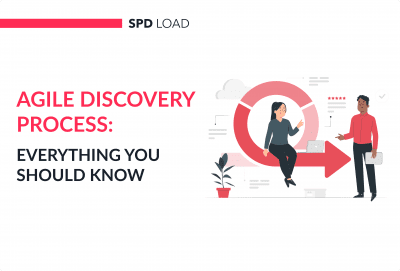Project Discovery Phase: Everything You Must Know
- Updated: Aug 27, 2024
- 9 min
Building a new software product? Don’t skip the discovery phase. This critical first step will set your project up for success.
In this blog post, you’ll learn:
- What is the discovery phase
- Why it’s essential for product founders
- The major benefits it provides
- How the discovery process works
- And more
As an entrepreneur or product manager, you want to avoid blowing budgets, missing deadlines, or launching an application that completely flops.
Conducting a thorough discovery phase helps you connect with developers, delve into customer requirements, assess the competition, and craft a solid development plan. This proactive approach reduces risk and leads to better outcomes.
If you prefer visuals before diving into the details, check out bonus infographics at the end of this post.
Grow your startup globally with our clear marketing plan that brings real results.
What is the Discovery Phase?
The discovery phase is an initial stage in the development process of a product or project. Key stakeholders, such as entrepreneurs, product managers, designers, and developers, gather to explore and define various aspects of the project.
It is designed to let developers understand the idea and vision, set up business goals, collect business and technical requirements, provide you with a budget, plan the development process, assess and prevent risks.
There are a few elements of the discovery phase.
| Aspect | Description |
| Market Analysis | Market analysis is the analysis of market demand: the size of the market, the number of competitors, financial and technological trends. As per CB Insights, 42% of small businesses close because there is no market for their products. These stats prove that market research is an important part of the discovery phase of a software project. A thorough market analysis helps to determine if the end-users actually need your product or not. |
| Competitor Analysis | Along with the market analysis, finding out about your competitors is just as necessary. Statistics suggest that 19% of businesses fail due to high competition. Hence, competitor research is essential to understanding what products your competitors have developed and how they perform. |
| Learn about your target audience | When creating new software, it’s essential to understand if there’s a genuine need among the audience. This will also help you set up a clear vision for the development direction. To assess the viability of the mobile app or software, you can develop an MVP and find out if it has market potential. Learn more about MVP in software development. |
| Identify business goal | Another crucial aspect of the discovery phase of a software project is setting a business goal. You will only succeed in your venture if you are focused on what you need. According to a CB insights study, 13% of businesses fail just because they lose focus. |
| Cost analysis | 29% of small businesses fail because of lack of funding. The discovery phase is when you analyze this aspect to plan your next development process. |
These fundamental aspects of the agile discovery phase require your full attention.
Now, let us move on to the next section, which will explore the reasons for focusing on the project’s discovery phase.
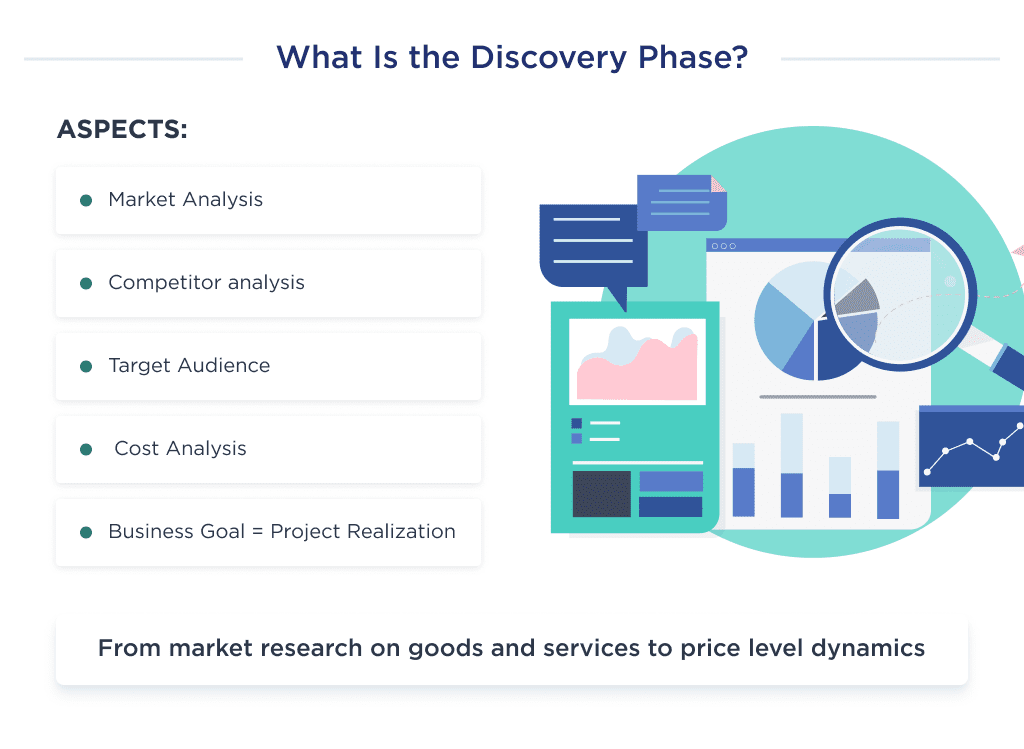
Why Should Entrepreneurs Consider the Agile Discovery Phase?
We highlighted four key reasons why the discovery phase is required. Let’s examine the details.
1. Create a Market-Driven Application
To better grasp our point, consider the clash between Facebook and MySpace.
Both were social networks with similar concepts and features, yet Facebook outshined MySpace. Why?
This is primarily due to its perfect alignment with the target audience, market trends, and launch timing.
In simple terms, Facebook recognized an emerging trend early on and provided a product tailored to the market without needing groundbreaking innovation.
Similarly, the discovery phase enables you to assess whether your idea aligns with the market, potentially paving the way for the Next Big Thing in product development.
2. Develop Detailed Project Documentation
Think of the software requirements specification as a map for building your website or app.
It lays out what your project needs and how the team will work on it.
Comprehensive documentation details the features of your software, helping you estimate the work and time each stage of development will take.
This way, everyone on the team knows what they need to do, keeping the project on track.
Here you can find an example of project documentation.
Now let’s talk about how the team will use the SRS.
3. Design UX Prototypes
A prototype file is like a rough sketch of your app, showing how it should function without fancy colors or detailed visuals.
It’s made using information from requirement documents and is super important in the early stages of software development.
Prototypes are crucial for testing ideas with real users to see if they’ll actually work, and they help the development team understand the project better.
Plus, they let you make improvements to the user experience before diving into the full development.
Here are two examples of wireframes: for a web app and for a mobile one.
Find the best TypeScript developers for your project.
4. Test Alignment Between Expectations and Developer Deliverables
At this point, you should understand that the discovery process is a negotiation stage in the software development lifecycle.
In fact, you, as a customer, negotiate with your potential dedicated development team about everything related to a project, from the concept to potential post-launch risks.
That’s why you could consider the discovery phase as a quality check approach for your development partner at a low cost. The price to develop a website or app development costs will be much higher.
You can check an app cost calculator here to find out approximate app development pricing.
Now, let’s go further into the benefits of an agile discovery phase.

What Are the Benefits of the Discovery Phase?
If you do the agile discovery phase right, your business will do really well and you’ll achieve various benefits along the way. Let’s explore these perks.
| Benefit | Description |
| Cost Reduction | The discovery phase of a software project can reduce overall project costs significantly. Stats suggest that 18% of firms fail due to pricing issues, and the project discovery phase can help you prevent that. Proper documentation and a well-coordinated team will help reduce the cost of your app development process. |
| Risk management | There is always a level of risk involved when undertaking new activities or ventures. Most companies do not perform a risk analysis. Due to this, they face issues like missed deadlines and budget challenges. However, with an agile discovery phase, you can save money, visualize your target clearly, and prevent missing deadlines. |
| Idea validation | No matter what your idea is, the discovery phase of your software project can help you validate it properly. Read more about the importance of idea validation. |
| Team formation | According to CBInsights, 23% of businesses fail due to a weak team. The discovery phase helps you find out what type of people you need to create the product, manage the development process, and monitor deliverables. Therefore, it is recommended to hire team members at an early stage and create a well-coordinated plan. |
| Set business goals | During the discovery phase, you will gain a clear understanding of the final product. It will help you streamline the whole process. |
Now that we’ve discussed what and why we do the software development discovery phase, let’s dive into a clear explanation of each step and what you can expect to get from it.
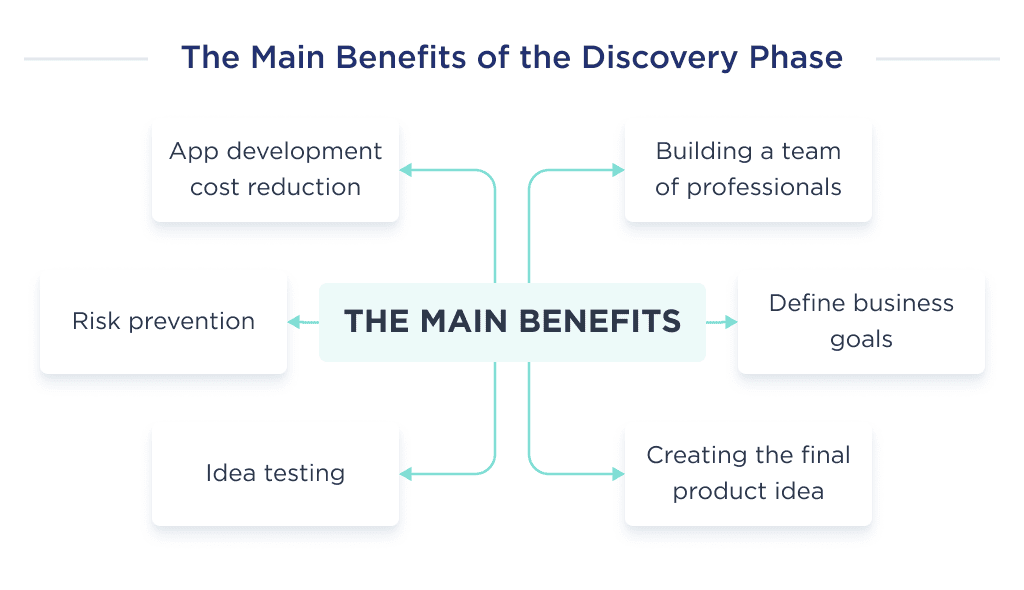
How Much Does a Discovery Phase Cost?
The cost of the discovery phase for a project typically falls between $5,000 to $15,000.
There is a pretty simple formula behind these numbers.
The discovery phase is priced at 10% of the development budget.
After the initial discussion of the concept, the developers already have a rough idea of what should be created and how it should work.
Therefore, the price of the discovery stage can tell you in advance how much the final product will cost.
Now, let’s talk about the factors that impact the cost, specifically the team structure and the process.
Building a Team for the Discovery Phase
Here are the team members who can manage the discovery phase of your software project.
- Project manager
- Business analyst or solution architect
- CTO
- UX/UI designer
- Backend, frontend, or mobile developers
- Marketing manager
In fact, the same team members who will develop the project and determine its prospects and market will also be involved in evaluating it.
Let’s take a closer look at how they will cooperate.

The Discovery Phase Step-by-Step Process
The process of a discovery phase may vary from one company to another. However, we’d like to highlight the most common way to conduct product discovery:
- Interview with a founder
- Analysis of a product idea
- Analysis of a market, target audience, competitors
- Creation of specifications
- Design of user experience wireframes
- Detailed estimation of a development
Let’s describe each step in detail.
Step 1: Founder Interview
The initial stage includes interviewing the founder, the business owner, or the product owner.
The purpose of the interview is to gain insight into the origin of the idea and what sets it apart. This way, we are able to understand the goals and intentions behind the initial concept.
After getting all the necessary information, we start the discovery phase.
Access premium design and development services for unmatched success.
Step 2: Discovery Workshops
At this stage, the development team analyzes the key results of the original idea and thinks through the business objectives, goals, and expectations.
The team develops the initial technical requirements, including the application’s workflow and the selection of the technology stack.
The finalization of this choice happens after an in-depth analysis of the product prospects.
Step 3: Customer Analysis
This part of our workflow includes the overall analysis of the audience you’re targeting. As your product should cater to a specific audience, it is essential to check if they even need it.
Here are some of the aspects that must be checked:
- Customer profile
- Demographics
- Buying process
- Problems and pain points
We closely study the factors that make the customer buy the product, such as their pain points, interests, triggers, etc.
Step 4: Market Analysis
This step of a software project’s discovery phase deals with the overall market analysis. It includes various factors like:
- Market size. We check whether the product’s market size is high. The market should grow in the next 5-10 years. We also check the market trends.
- Competitors. We will examine direct and indirect competitors closely: who they are, where they are, what type of apps they have, how they work, how they market, and so on.
- Business analysis: We conduct thorough business research to identify potential business challenges. Some popular techniques for business analysis include SWOT, MOST, Business Process Modelling, PESTLE, and others.
Once we finish with the market, we look closely at competitors.
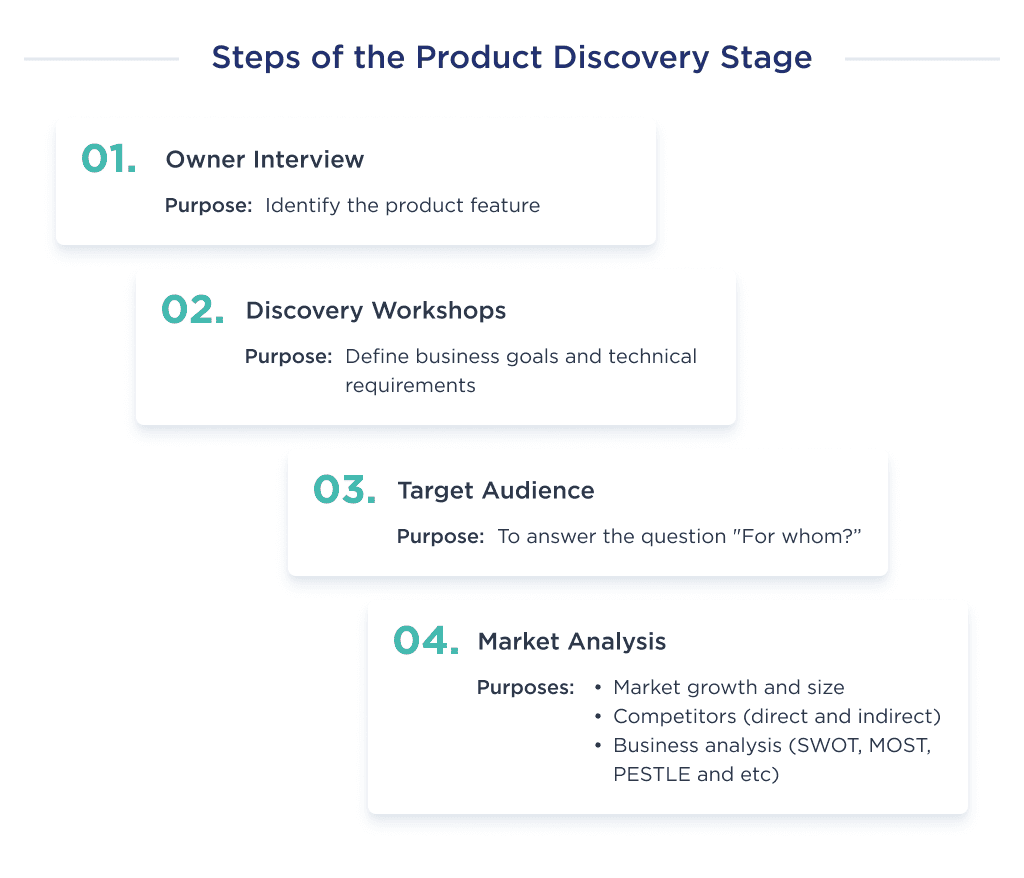
Step 5: Competitor Analysis
The competitor analysis is the final step of the discovery phase. Here are some factors we evaluate when conducting our competitors’ research:
- Location
- The business model they follow
- Monetization model
- The pricing they offer
- Features of their product
The following factors will determine how much better you are than your competitors.
Step 6: Software Requirements Specification
Software requirements specifications are like a detailed plan for the software we’re going to create.
It’s written as stories from the user’s perspective and includes things like how users will move through the app, what features it will have, and what technology we’ll use to build it.
During the project discovery phase, we keep all this information in one document to keep everyone on the team on the same page.
This document helps us create a clear picture of how the app should work and what it should look like for users.
Step 7: Prototyping and Wireframes
The wireframes help to make sure that the team understands and interprets the expectations of stakeholders correctly. If something is wrong, it’s much easier to fix as the workflow is already visualized as a wireframe.
But it’s important to remember that stakeholders may be wrong about workflow too. If any misunderstandings arise, UX wireframes can be used to enhance the platform’s workflow and improve its user-friendliness.
Step 8: Project Blueprint
In the final stage of the software project discovery phase, we create project blueprints.
These blueprints combine all the work done in earlier steps. Having a project blueprint is crucial because it ensures that all tasks are completed on time.
It also outlines technical needs and other important details, like:
- Project timeline
- Technical details and project requirements
- Cost estimation
- Milestones
- Deadlines
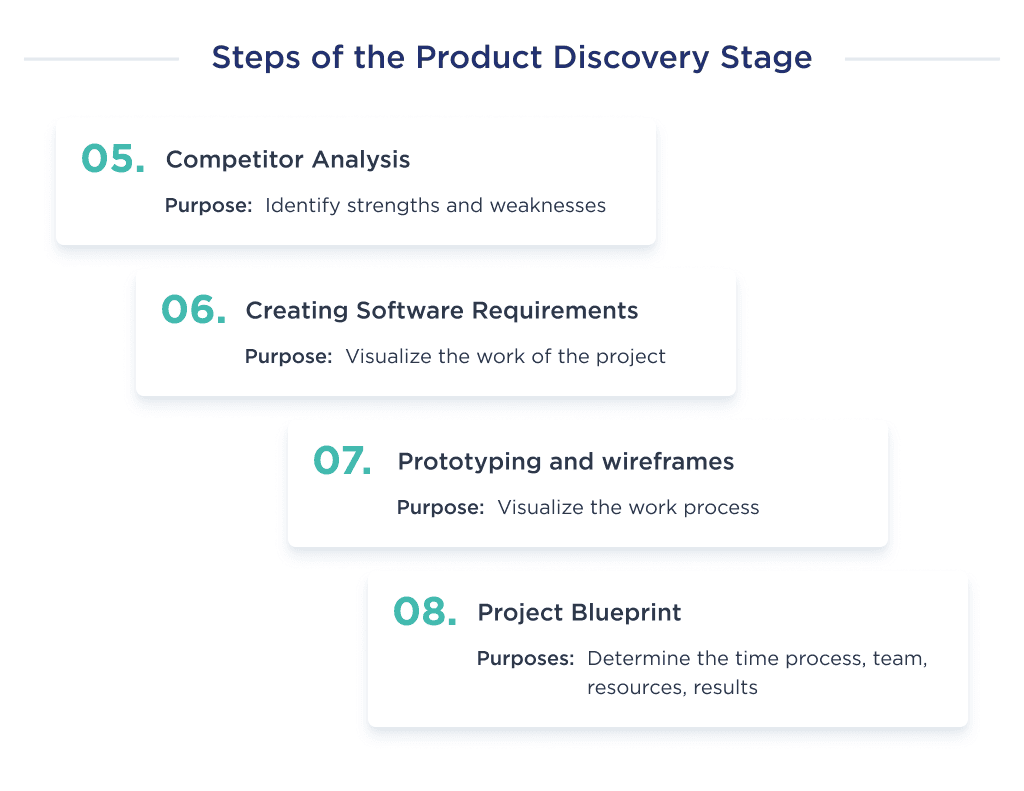
What’s Next?
The discovery phase is like laying the groundwork for your software product’s success – putting in the effort now pays off later.
In this article, we’ve discussed why having a thorough discovery process is important, what benefits it brings, typical costs, steps involved, and what you can expect to get out of it.
However, reading about it is one thing, experiencing it firsthand is another.
At SpdLoad, we’ve spent more than 10 years helping startups create their first versions of products and building our own. We’ve seen what happens with both good and bad discovery phases!
If you’re looking for someone to help you bring your product idea to life, we’d be thrilled to guide you through the discovery process.
Our method closely examines customers’ wants, market opportunities, and competitors’ actions. We then turn all of that into a clear plan customized to your vision.
Don’t leave the success of your product to chance – set it up for success right from the beginning.
Reach out to schedule a free discovery consultation and see if we’re a match.
Bonus Infographics
Here you’ll find a summary of our in-depth guide.
Learn the highlights of the discovery phase in software development.





